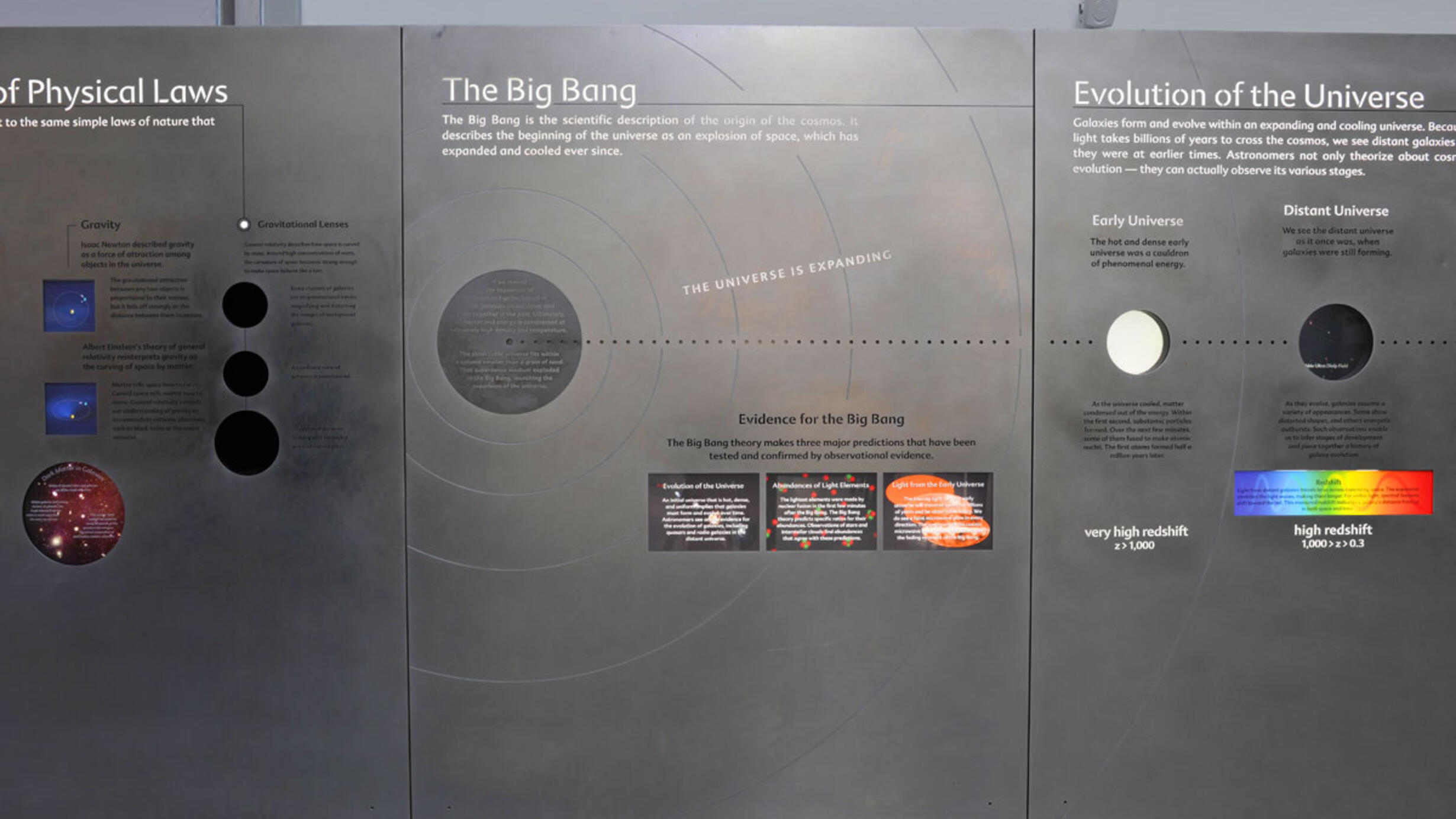The Big Bang
Part of Hall of the Universe.
Part of Hall of the Universe.
 AMNH/D. Finin
AMNH/D. Finin The Big Bang is the scientific description of the origin of the cosmos. It describes the beginning of the universe as an explosion of space, which has expanded and cooled ever since.
If we rewind the expansion of space and go backward in time, galaxies crowd closer and closer together in the past. Ultimately, all matter and energy is compressed at extremely high density and temperature. The observable universe fits within a volume smaller than a grain of sand. That superdense medium exploded in the Big Bang, launching the expansion of the universe.
Evidence for the Big Bang
The Big Bang theory makes three major predictions that have been tested and confirmed by observational evidence.
Evolution of the Universe: An initial universe that is hot, dense, and uniform implies that galaxies must form and evolve over time. Astronomers see ample evidence for the evolution of galaxies, including quasars and radio galaxies in the distant universe.
Abundances of Light Elements: The lightest elements were made by nuclear fusion in the first few minutes after the Big Bang. The Big Bang theory predicts specific ratios for their abundances. Observations of stars and interstellar clouds find abundances that agree with these predictions.
Light from the Early Universe: The blazing light of a hot early universe will traverse space for billions of years and be observable today. We do see a faint microwave glow in every direction. The spectrum of this cosmic microwave background identifies it as the fading remnant of the Big Bang.